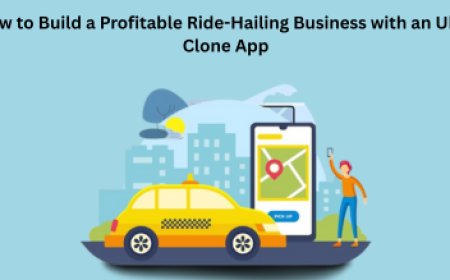How to Automate Your Way to Real Passive Income This Year
Discover how to automate your way to real passive income this year with IT-driven strategies, tools, and tips to earn money online without constant oversight.

Introduction: The Allure of Automation and Passive Income
Have you ever stared at your screen after a long day of troubleshooting servers or writing code, wondering if theres a way to let technology work for you so you can reclaim your evenings? Ive been there juggling tickets, late-night deployments, and the nagging thought that my time could be spent more creatively. That curiosity led me down the path of automating side projects and discovering genuine passive income streams. In this article, Ill walk you through how to automate your way to real passive income this year. Think of it as having your scripts, bots, or workflows chugging along in the background, bringing in earnings while you focus on what matters most: whether thats learning a new technology, spending time with family, or simply unwinding.
1. Why Automate Passive Income? Beyond Quick Ways to Make Money
Many articles promise quick and easy ways to make money, and yes, some of those can yield short-term gains like filling out surveys or doing microtasks. But if youre aiming for sustainable earning passive income over months and years, automation is key. Automation transforms one-time efforts into systems that run themselves: a script that periodically posts curated content, a scheduled email sequence that nurtures affiliate leads, or a web scraper feeding data into a dashboard that monetizes insights.
Sustainability over quick wins: Quick easy ways to make money might help you grab a few extra dollars, but they often require constant manual input. Automation shifts the effort to the front-end: once set up, your system keeps humming.
Leverage your IT skills: As someone with a tech background, you can build or stitch together tools APIs, scripts, cloud functions that non-technical users might struggle with. That expertise is a competitive edge.
Scalability: A manual side hustle caps out at the hours you can personally invest. Automation can handle increased volume with minimal extra work, opening doors to more significant passive income.
2. Spotting Opportunities: Which Passive Income Ideas Fit Automation?
Before diving into code or no-code tools, lets explore a few common passive income models where automation shines:
1. Content-Driven Sites & Affiliate Marketing
o Automation angle: Use scripts or tools to research trending keywords, schedule posts, or update prices from affiliate partners. For example, a Python script could fetch the latest product prices daily and update your review pages automatically.
o Earning passive income: Once content is live and ranking, visitors click affiliate links your automation ensures the info stays fresh without manual edits.
2. Digital Products (E-books, Courses, Templates)
o Automation angle: Automate email funnels when someone downloads a free chapter or signs up, a sequence of pre-written emails nurtures them towards purchase. Payment handling and content delivery can be fully automated via platforms like Gumroad, SendGrid, or Zapier integrations.
o Earning passive income: After initial content creation and funnel setup, buyers flow in automatically.
3. SaaS or Microservices
o Automation angle: Deploy a simple web app or API service that solves a narrow problem (e.g., image compression API, analytics dashboard for niche data). Use cloud platforms to auto-scale, billing APIs to charge users monthly, and monitoring alerts to watch service health.
o Earning passive income: A steadily growing subscriber base provides recurring revenue, with automation handling billing, onboarding emails, and usage monitoring.
4. Print-on-Demand or Merch Stores
o Automation angle: Integrate design uploads with platforms like Printful. Automate social media posts announcing new designs. Use scheduled ads or chatbots to answer FAQs.
o Earning passive income: Designs sell without manual order handling; your system notifies you only when theres an exception.
5. Ad-Based Content Aggregation or Newsletters
o Automation angle: Build a scraper or RSS aggregator that curates niche content into a blog or newsletter. Automate formatting and scheduling of newsletters via services like Mailchimps API. Monetize via ads or sponsorships.
o Earning passive income: Regular newsletters keep subscribers engaged; advertisers pay for access to your audience.
6. Data & Analytics Products
o Automation angle: Collect public or purchased data, process it with scripts, generate reports or dashboards, and deliver them automatically via email or a portal.
o Earning passive income: Clients subscribe for regular insights without your constant intervention.
3. Tools & Tech: Building Blocks for Automation
You dont need to reinvent the wheel leverage existing tools, libraries, and platforms. Here are some building blocks Ive used or seen colleagues rely on:
Scripting Languages: Python, Node.js, or your favorite language for API calls, scrapers, or data processing.
No-Code/Low-Code Platforms: Zapier, Integromat (Make), n8n great for gluing together services (e.g., when a sale happens, add subscriber to CRM, send thank-you email, update spreadsheet).
Cloud Functions & Serverless: AWS Lambda, Google Cloud Functions, Azure Functions run code in response to triggers (e.g., new form submission, scheduled CRON jobs).
CI/CD Pipelines: Use GitHub Actions or GitLab CI to automatically deploy updates to your site or service when you push code.
Content Management & Scheduling: WordPress with scheduling plugins; headless CMS + Netlify/Vercel for automated builds.
Email & CRM APIs: SendGrid, Mailchimp, ConvertKit triggered sequences and subscriber management without manual sending.
Monitoring & Alerts: UptimeRobot, CloudWatch automatically notify you if something breaks.
Payment & Billing: Stripe, Paddle automate subscription billing, handle invoices, and issue receipts.
Analytics & Reporting: Google Analytics API, or custom dashboards via Metabase track visitor behavior or usage metrics automatically.
4. Step-by-Step Approach: From Idea to Automated System
4.1. Choose a Niche and Validate
Start with your interests or pain points: What problems have you solved repeatedly? For instance, automating log analysis, or a common reporting need.
Validate demand: Use keyword tools to check search volume for ways to make money online in your niche, or browse forums where people ask about solutions.
Minimal Viable Solution: Sketch a simple version maybe a one-page site explaining your tool/service or offering a free resource.
4.2. Plan the Automation Flow
Map the user journey: From discovery (e.g., SEO article or social post) ? action (download or signup) ? delivery (automated email or dashboard) ? monetization (purchase, affiliate click, or ad impression).
Identify triggers and actions: E.g., trigger = new signup; actions = add to Mailchimp, send welcome email, grant access to resource.
Select tools: Decide which parts need custom code vs. no-code. If you need frequent data scraping, write a Python script scheduled via a cloud function. If its a simple form-to-CRM, Zapier might suffice.
4.3. Develop & Automate
Prototype manually first: Before full automation, test flows manually send yourself emails, process data, confirm the experience is smooth.
Script and Connect: Build your scripts or set up workflows:
o For a scraper: write Python with BeautifulSoup or relevant API calls; deploy on a schedule.
o For email funnels: draft authentic, helpful emails; hook them into your platforms API.
o For payment: integrate Stripes checkout; test webhooks to handle successful payments.
Deploy and Schedule: Use a serverless function or scheduler to run tasks at set intervals.
Logging & Error Handling: Ensure your scripts report failures (e.g., via Slack notifications or emails) so you can step in if something breaks.
4.4. Test Thoroughly
Edge cases: What if an API changes? Build in checks, version pin dependencies.
Load considerations: If your automated system attracts traffic or tasks grow, ensure your solution can scale or you receive alerts before costs spike.
User experience: Even automated emails should feel personal use merge fields, variable content, and avoid robotic language.
5. Real-World Example: Automating a Niche Content Site
Let me share a brief story: A couple of years ago, I noticed a gap in niche tech forums for up-to-date comparisons of cloud cost calculators. I built a small site that:
1. Scrapes official pricing pages weekly via a Python script on AWS Lambda.
2. Updates comparison tables on a static site generated by a headless CMS.
3. Sends a monthly newsletter summarizing major pricing changes using an automated email sequence.
4. Monetizes via affiliate links for cloud providers and ads.
Initial effort: I spent several weekends coding the scraper, designing the static site, and writing newsletter templates.
Automation payoff: Now, the scraper runs on schedule; the site rebuilds automatically; newsletter sends without me clicking send. Every month, I log in to check analyticsthen let the system run. Over time, the site built domain authority, traffic rose, and affiliate earnings grew steadily. Thats earning passive income in action: front-loaded work, then an automated engine.
6. Balancing Quick Ways vs. Sustainable Automation
You may have seen quick ways to make money lists that promise fast returns with minimal setup. While some quick and easy ways to make money can serve as stepping stones (e.g., freelancing small gigs to raise initial capital), they often demand your ongoing time. Instead:
Use quick wins for learning and validation: Test a simple affiliate post or minor digital product. If it shows traction, invest in automating it.
Aim for systems that minimize upkeep: Whenever you add a new piece like a content category design it so it plugs into your automation (e.g., a template-based post that auto-publishes at scheduled times).
Monitor ROI: Track how much time you spend maintaining the automation versus earnings. Tweak or retire low-return tasks.
7. Common Pitfalls and How to Avoid Them
1. Over-Automating Without Value: Automating trivial tasks that yield no real demand wastes effort. Always tie automation to validated user needs.
2. Neglecting Maintenance: APIs change; servers need updates. Set up alerts and routine checks so your system doesnt silently fail.
3. Copy-Paste Automation: Avoid generic set up this Zap advice without customizing for your audience. Tailor content, messaging, and timing based on real user feedback.
4. Underestimating Initial Work: Building durable systems takes time. Accept that early weeks/months involve more manual testing.
5. Ignoring Legal/Compliance: If scraping data, respect terms of service; if handling emails, follow spam regulations. Automating non-compliant processes can lead to bigger headaches.
8. Tips for Maximizing Your Automated Passive Income
Focus on Quality First: A well-researched blog post or a genuinely useful tool attracts trust. Automation helps deliver it consistently, but the core value must be strong.
Diversify Streams: Dont rely on a single affiliate partner or ad network. Automate multiple related flows so if one dries up, others keep working.
Iterate Based on Data: Use analytics to see what resonates: which automated emails get opens or clicks, which content draws traffic. Refine your automation steps (e.g., tweak subject lines, adjust posting times).
Leverage Community & Feedback: Even automated newsletters can invite replies. Read feedback and incorporate improvements then update your automated sequences or scripts.
Stay Updated on Tools: The automation landscape evolves rapidly. Keep an eye on new integrations, AI-driven tools for content creation or data analysis, and incorporate them thoughtfully.
Conclusion: Your First Steps Toward Automation-Driven Income
Automation doesnt happen overnight, but the journey can be rewarding and even fun if you love tinkering with tech. Start small: pick one passive income idea that resonates, validate demand, and map out an automated flow. Write the initial code or configure the workflow, test it, and then let it run. Check in regularly, learn from data, and iterate. Over time, youll build trust in your automated systems and watch them deliver earning passive income while you focus on new projects or enjoy well-deserved downtime.
Ready to take the first step? Sketch out a simple flow today: perhaps an automated email welcome sequence for subscribers, or a script to update price comparisons. Celebrate the small wins every bit of automation moves you closer to real passive income. Youve got this!












































